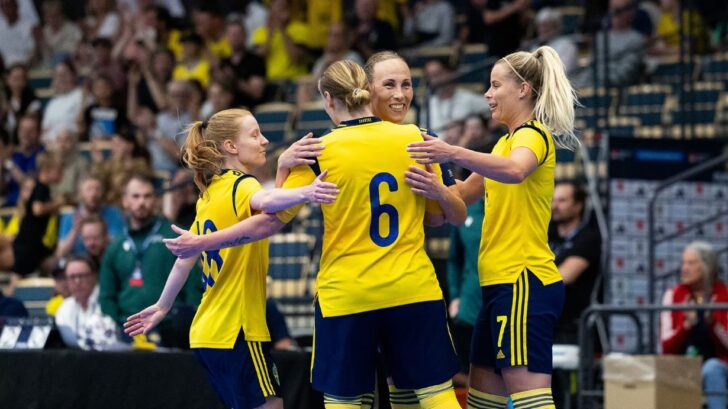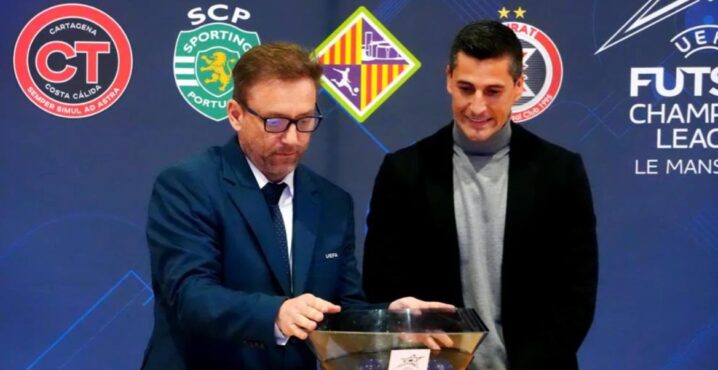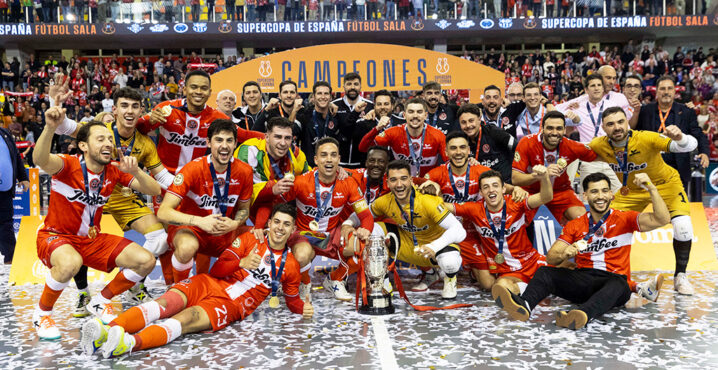Estimated reading time:8 minutes, 24 seconds
Exploring the Consequences of Futsal’s Funding Crisis in Sweden and the Path Forward for the Sport’s Survival.
After reading Per Broberg’s original article detailing the Swedish Football Association’s (SvFF) significant budget cuts to futsal, we felt compelled to reach out to him for further insights into the implications of these decisions. In his original piece, he expressed critical concerns about the future of futsal in Sweden, and we wanted to explore these issues in greater depth to provide the futsal community with a more comprehensive understanding of the situation. You can read his original article: https://bit.ly/4820spd
In recent weeks, the future of futsal in Sweden has come under serious threat following SvFF’s decision to cut the sport’s budget by 76%, reducing it from 18 million SEK to just 5 million SEK. This has left clubs, players, and the futsal community questioning how the sport can continue to thrive, especially when futsal has over 200,000 registered players across the country and is supported by almost all of the 24 district associations. With such a drastic reduction in funding, the consequences are wide-reaching, and the futsal community is mobilizing to ensure their concerns are heard.
We spoke with Per Broberg, the former Swedish FA Futsal Development Manager, to gain deeper insight into the potential impacts of these budget cuts, explore the challenges facing futsal, and understand what the future might hold for the sport in Sweden.
Loss of Momentum: Impact on Youth and Elite Development
The most concerning effect of SvFF’s budget cuts is the likely loss of momentum in futsal’s development at both the grassroots and elite levels. Broberg explains that youth development programs will be especially impacted, as they often benefit from interaction with national teams and high-level competition, which now face significant disruption.
“Without a clear path from grassroots to elite, young players might lose motivation to stay involved in the sport,” he states. This could result in a long-term decline in participation, as youth players typically need role models and opportunities to aspire toward, provided by the elite and national levels.
This structure is common in countries like Brazil and Spain, where futsal serves as a key developmental tool for football. Broberg worries that Sweden could fall behind if this connection between youth and elite levels is severed: “By cutting elite programs, we are also limiting the skill development pipeline for football and futsal players alike.”
National Teams and International Competitions: Missed Opportunities
With national team preparations halted and Sweden’s participation in international competitions under threat, the future looks uncertain for both the men’s and women’s squads. Sweden’s women’s national futsal team, currently ranked 5th in Europe, now faces significant challenges in qualifying for the 2025 Futsal World Cup. He notes that without proper preparation, they will struggle to compete at the highest level, diminishing both their chances of success and the opportunity to raise futsal’s profile in Sweden.
He emphasizes that competing internationally is crucial not only for the teams but also for the sport’s growth at home. “Being part of international tournaments helps promote the sport domestically and globally. If Sweden pulls back, we risk isolating ourselves in the futsal world, while other nations like France, Portugal, and even developing futsal nations gain ground.”
This lack of participation could erode Sweden’s reputation and momentum in the global futsal landscape—a risk Broberg sees as unnecessary and avoidable if SvFF rethinks its strategy.
Grassroots vs. Elite Development: The False Dichotomy
While SvFF has justified its budget cuts by stating that they will focus on grassroots and youth development, Broberg believes this approach is short-sighted if it comes at the expense of elite programs. “We’re all for a strong grassroots program, but not if it means sacrificing the elite level and national teams.”
For him, youth and elite development are not mutually exclusive but interconnected. A thriving elite level provides youth players with clear role models and something to aspire toward, which fuels the long-term growth of the sport. He argues that without a viable elite system, grassroots programs will lose much of their effectiveness, as young players may no longer see a pathway to higher competition.
In his view, SvFF must rethink this balance, ensuring that both grassroots and elite futsal are developed in tandem, rather than forcing one to suffer for the other.
Commercial Viability and Untapped Potential
A key justification for the cuts, according to SvFF, is that futsal lacks sufficient commercial viability at the elite level. However, Broberg believes that the sport’s potential has not yet been fully explored or realized. “We need patience and perseverance,” he says, arguing that futsal is still young in Sweden, with the league only being around for about seven years.
He also suggests that a separate futsal interest association could be formed, dedicated to securing sponsorships and increasing the sport’s visibility. He points out that futsal matches already have stakeholders—parents, friends, sponsors, and media—that, if tapped into effectively, could grow into larger commercial opportunities.
He believes futsal’s appeal can be expanded by showing the clear return on investment for sponsors, especially as the sport continues to attract more players and spectators.
Global Context: Sweden’s Place in Futsal’s Growth
Broberg draws comparisons between Sweden and other European nations that have embraced futsal development. France, for example, invested millions into futsal development programs, resulting in their rapid ascent from 28th to 7th in Europe in just over a decade. “France is now semi-finalists of the World Cup, and they have players transferred to top leagues in Spain,” he explains.
This success comes from strategic investments in talent centers, futsal pitches, and licensing structures—something Sweden could replicate with the right approach. “There’s no reason why we can’t follow in their footsteps, but we need a long-term vision from SvFF, not short-term budget cuts that stifle progress.”
UEFA’s role is also key. He emphasizes that UEFA has been actively encouraging national associations to promote futsal, providing grants and resources to foster its development. By not capitalizing on these opportunities, Sweden risks missing out on both financial support and best practices from other countries.
A Community Mobilized: Unity in Crisis
Despite the challenges, Broberg highlights a silver lining in the form of increased unity within Sweden’s futsal community. Clubs, players, and supporters are coming together in ways they hadn’t before, creating a stronger, more determined movement to protect the sport. “We’ve had to rally together in a way we haven’t before. It’s a crisis, but it’s also a chance for us to show how much this sport means to us,” he says.
This sense of solidarity is fueling discussions on how to ensure futsal’s long-term survival, including possible advocacy and fundraising efforts. He also hints at a growing willingness within the community to explore greater autonomy from SvFF, potentially taking more control over the sport’s direction and funding in Sweden.
Fractured Relations: A Potential Break from SvFF?
As frustration with SvFF grows, some futsal clubs are contemplating a break from the Swedish Football Association. Broberg acknowledges that discussions around this possibility have already started, particularly due to dissatisfaction with how the decision-making process has been handled.
“It’s not just the budget cut itself; it’s how these decisions are being made in what is supposed to be a democratic organization,” he says, questioning the transparency and fairness of SvFF’s approach.
A break from SvFF would undoubtedly have serious consequences for the sport in Sweden, but he sees it as a last resort. “The worst-case scenario is a complete separation, where no one wins. But if futsal is to help develop Swedish football, we need to be fully included in the football family.”
Looking Ahead: Risk of Fragmentation or New Opportunities?
As discussions about possibly breaking away from SvFF continue to gain traction, Per warns that fragmentation could lead to two weakened systems rather than one strong, unified sport. However, he also believes that this situation has brought new opportunities for the futsal community to gain greater autonomy.
“There’s an opportunity here for us to organize independently, find our own sponsors, and develop our own strategies that don’t rely on SvFF’s approval or funding,” he explains. While the prospect of a split is seen as a last resort, it’s clear that the futsal community is already planning how to self-sustain if necessary.
Closing Thoughts: A Critical Moment for Swedish Futsal
At this critical juncture, Broberg remains cautiously optimistic. “We’ve brought attention to futsal and its role in Swedish sports development. This is our chance to prove that futsal can and should thrive, but we need real commitment from the football association or a clear path forward on our own.”
Swedish futsal stands at a crossroads, and the decisions made in the coming months will have long-term implications for the sport’s future. While the road ahead may be uncertain, one thing is clear: the passion and determination of the futsal community will continue to drive the sport forward, regardless of the obstacles it faces.
Organ Donation
Futsal Focus is a supporter of Dáithí Mac Gabhann and his family’s campaign to raise awareness of Organ Donation. We encourage our readers to learn more about Organ Donation: https://www.organdonation.nhs.uk/
Futsal Focus
You can read more articles about domestic futsal by going to the top navigation bar or by clicking here
If you like this article and would like to keep updated on Futsal news, developments, etc then you can now follow Futsal Focus via Google News by following our page which will send you an alert as soon as we publish an article so please click here and follow us on Google.
You can also keep updated on Futsal news, developments, etc then please submit your email below in the Subscribe to Futsal Focus option.
Follow Futsal Focus by clicking on Facebook, Twitter, or Instagram or on the social media buttons on the website


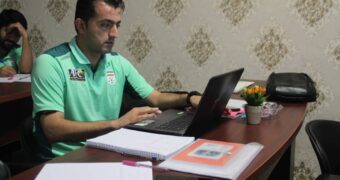




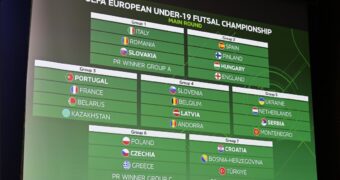

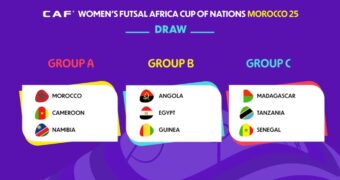






![Validate my RSS feed [Valid RSS]](https://www.futsalfocus.net/wp-content/uploads/2020/01/valid-rss-rogers.png)

